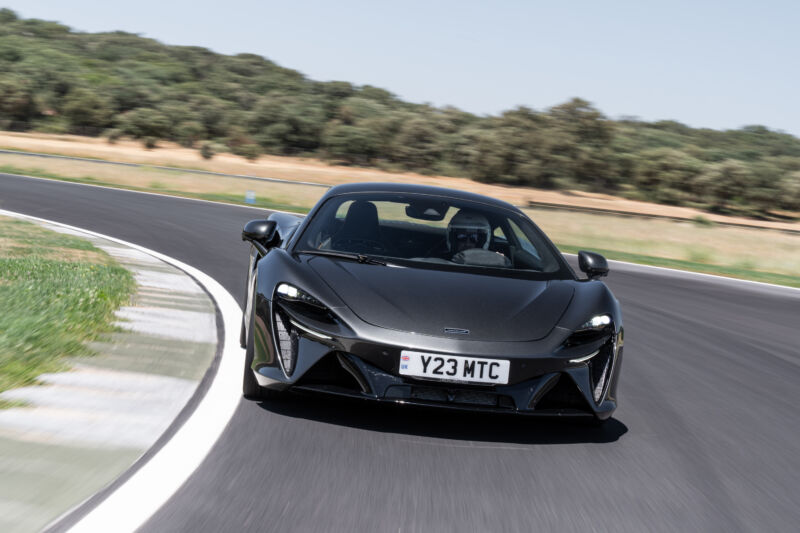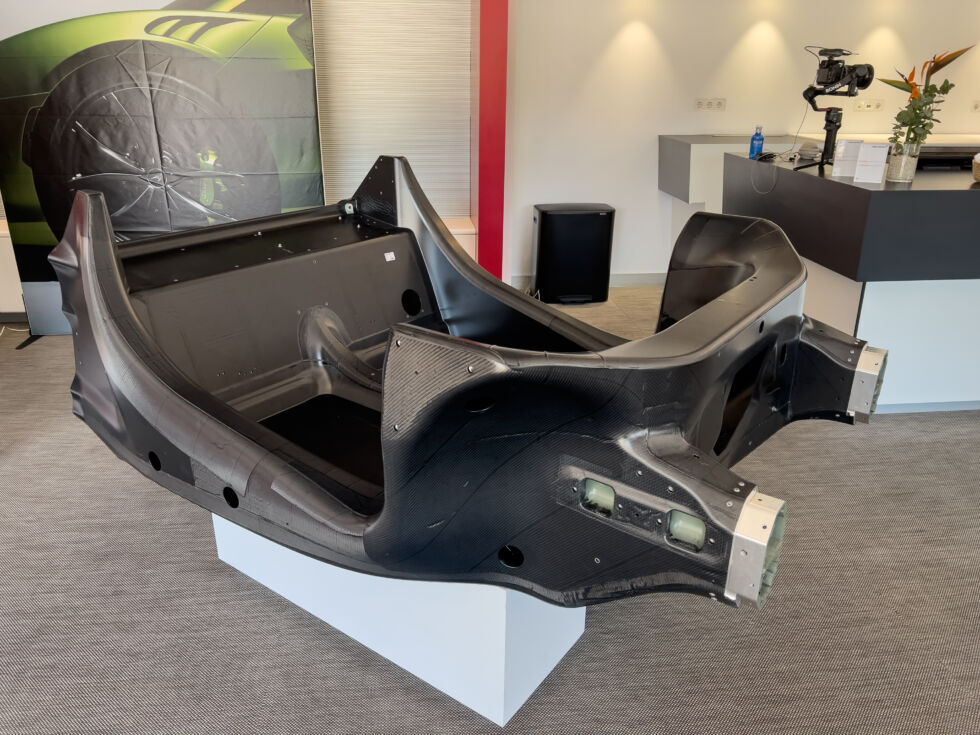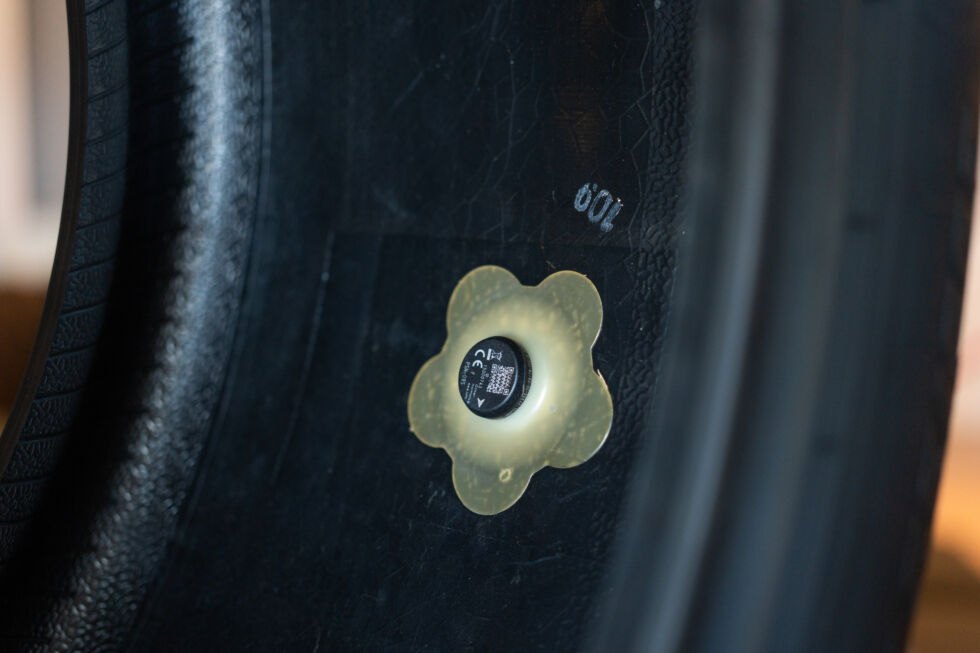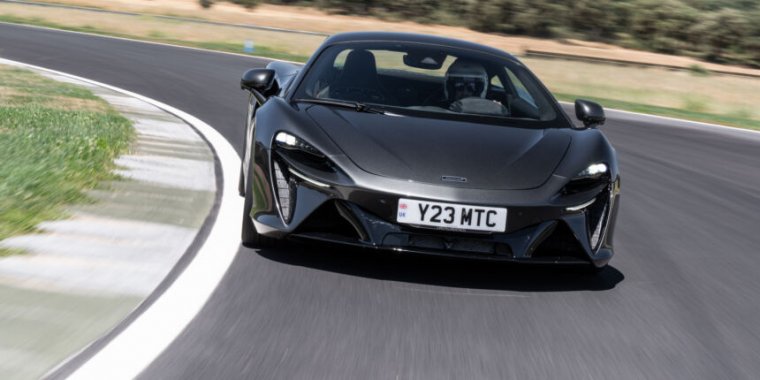
McLaren
Since the launch of the McLaren MP4-12C in 2011, all the company’s road cars have fundamentally used different variants of the same V8 engine and similar versions of the same carbon fiber monocoque chassis. But 11 years is a long time in the life cycle of an automotive platform, and now the British supercar maker has a shiny new toy called the Artura.
It’s a clean-sheet design, powered by a plug-in hybrid EV powertrain with an all-new V6 engine augmented by a hybrid electric motor, with perhaps the best-looking interior of any McLaren to date and a raft of technology upgrades that should improve the experience without compromising driver engagement. And unlike McLaren’s last PHEV, the multimillion-dollar P1, the Artura replaces the brand’s previous entry-level supercar, the 570, so it starts at a (reasonable for a McLaren) $233,000.
New monocoque
Perhaps surprisingly for a company that pioneered the use of carbon fiber chassis in Formula 1 and then again with the F1 road car of 1993, McLaren Automotive has historically contracted the production of its carbon fiber monocoque tubs to an Austrian company called CarboTech. But with the advent of this new platform, called the McLaren Carbon Lightweight Architecture (MCLA), that work is being done in-house at a new facility in Sheffield in northern England.
To an untrained eye like mine, the naked carbon fiber MCLA tub on display looks pretty much the same as earlier McLaren MonoCells. But McLaren says the entire geometry is new, as are the types of carbon fiber, the resin, and the structural core. In addition to protecting the occupants, the tub also protects the hybrid battery pack in a separate safety cell, but it weighs just 181 lbs (82 kg).
Aluminum subframes mate to the front and rear of the monocoque. The metal is much cheaper than carbon fiber and therefore makes the deformable crash structures more easily repairable or replaceable. The suspension that attaches to the rear subframe is a new design, too, and is now a multilink setup instead of using the dual wishbones we’ve seen in previous McLarens.

Jonathan Gitlin
The third new aspect of MCLA, we’re told, is a new Ethernet-based electrical architecture. It’s more elegant than you’d find in most current cars, swapping dozens of discrete black-box modules for four domain controllers that are connected by a central gateway.
This new electrical architecture is good news because it allows for some advanced driver assistance features (ADAS), including adaptive cruise control, and it can handle over-the-air updates. The architecture also cuts the mass of the required cabling by 10 percent and the packaging volume by 25 percent.
The Artura is fitted with Pirelli’s latest technology, the Cyber Tire. I explored this technology in more depth last year; it uses low-energy Bluetooth to give the car always-on, instant tire temperature and pressure readings that are more accurate than those from a valve-mounted tire pressure monitoring system.

McLaren
With a curb weight of 3,303 lbs (1,498 kg), the Artura is actually lighter than the McLaren GT we tested a couple of years ago, and it’s roughly the same as the 570S that it replaces, despite the addition of a hybrid system.








